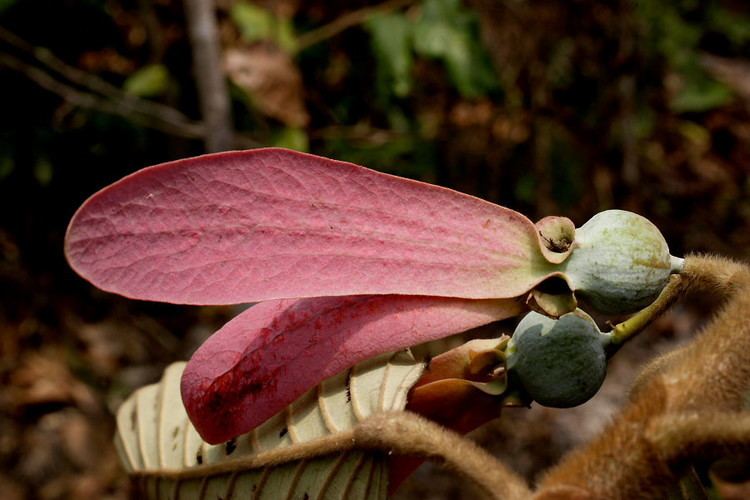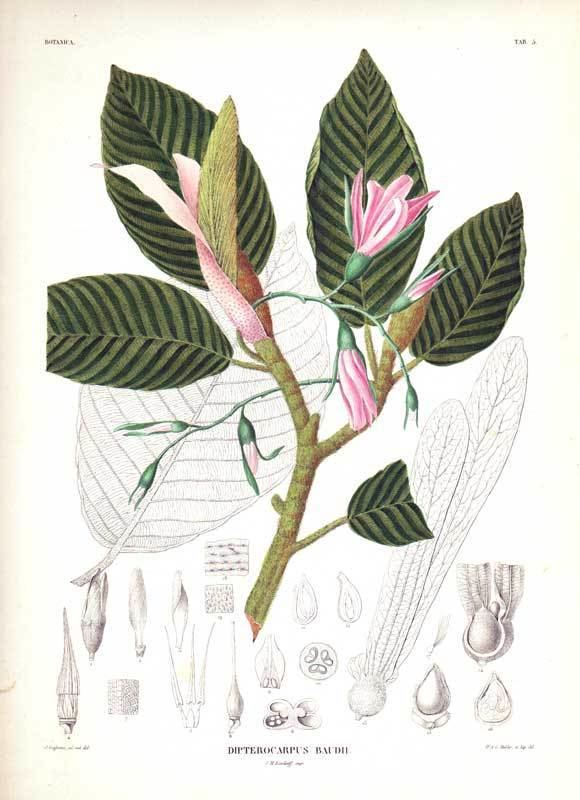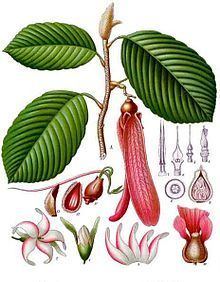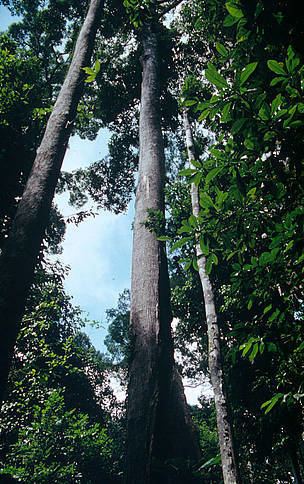Order Malvales | Scientific name Dipterocarpaceae Rank Family | |
 | ||
Lower classifications | ||
Dipterocarpaceae are a family of 16 genera and approximately 695 known species of mainly tropical lowland rainforest trees. The family name, from the type genus Dipterocarpus, is derived from Greek (di = two, pteron = wing and karpos = fruit) and refers to the two-winged fruit. The largest genera are Shorea (196 species), Hopea (104 species), Dipterocarpus (70 species), and Vatica (65 species). Many are large forest emergent species, typically reaching heights of 40–70 m, some even over 80 m (in the genera Dryobalanops, Hopea and Shorea), with the tallest known living specimen (Shorea faguetiana) 88.3 m tall. The species of this family are of major importance in the timber trade. Their distribution is pantropical, from northern South America to Africa, the Seychelles, India, Indochina, Indonesia and Malaysia. The greatest diversity of Dipterocarpaceae occurs in Borneo. Some species are now endangered as a result of overcutting, extensive illegal logging and habitat conversion. They provide valuable woods, aromatic essential oils, balsam, resins and are a source for plywood.
Contents

Classification
The dipterocarp family is generally divided into two subfamilies:


A recent genetic study found that the Asian dipterocarps share a common ancestor with the Sarcolaenaceae, a tree family endemic to Madagascar. This suggests that ancestor of the Dipterocarps originated in the southern supercontinent of Gondwana, and that the common ancestor of the Asian dipterocarps and the Sarcolaenaceae was found in the India-Madagascar-Seychelles land mass millions of years ago, and were carried northward by India, which later collided with Asia and allowed the dipterocarps to spread across Southeast Asia and Malaysia. The first dipterocarp pollen has been found in Myanmar (which at that time was part of the Indian plate) and it dates from the upper Oligocene. The sample appears to slowly increase in terms of diversity and abundance across the region into the mid-Miocene Chemical traces of dipterocarp resins have been found dating back to the Eocene of India.
Fossilized arthropods

52-million-year-old amber found in the Gujarat province, India, containing a large amount of fossilized arthropods, was identified as sap from the Dipterocarpaceae family.
Ecology

Dipterocarpaceae species can be either evergreen or deciduous. Species occurring in Thailand grows from sea level to c. 1300 m elevation. Environments in which the species of the family occur in Thailand include: Lowland dipterocarp forest 0–350 m; Riparian fringe; Limestone hills; and Coastal hills.
